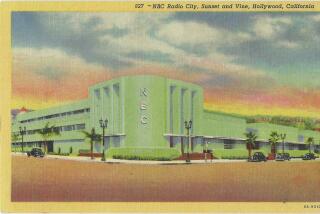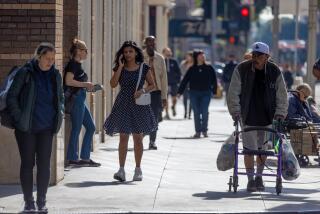Playing the Numbers
As crises go, it does not rank among the worst, but the nation is running out of telephone numbers.
The still-new 310 area code on the Westside probably soon will split yet again, into 310 and 562, meaning new stationery and business cards and costly reprogramming of phone systems. How long will the public stand for carving up the landscape into increasingly tiny pieces of telephonic turf?
The original 144 area codes devised in 1947 to permit direct long-distance dialing nationwide are now exhausted by the unanticipated explosion of pagers, cellular phones, computer modems and credit-card terminals. The 310 area is the fastest-growing in California, but not because of any population boom; 80% of new lines are for pagers and cellular phones, de rigueur accouterments for self-respecting denizens of movieland.
At this rate California’s 13 area codes will grow to 22 by the year 2000. Nationally, 640 new codes became available this year but even when fully utilized they will expand capacity only five-fold, from the current 1.3 billion to 6.2 billion lines.
Numerous solutions have been proposed for this problem, which often generates highly emotional responses. To avoid another area code change, Pacific Bell and GTE recently called for an “overlay” by which new numbers in the 310 area are assigned the 562 code, with the two codes sharing geographic boundaries. Under opposition from ATT, MCI, Sprint and cable companies that expect to start offering local phone service next year, the Public Utilities Commission rejected the overlay. Opponents argued that an overlay would give Pac Bell and GTE an unfair advantage, allowing them to offer seven-digit dialing to 310 customers while newcomers would have to use 10 digits for most local calls.
This local issue is likely to go to court. But ultimately, telephone companies and the Federal Communications Commission must come up with a national rationale that both greatly expands the number of lines available and protects the public from frequent phone-number dislocation.
Original phone exchanges gave us a measure of local identity. Anyone over 40 can probably remember MAdison or AXminister in Los Angeles. Area codes are less colorful but still confer a bit of community, like ZIP codes, in an otherwise anonymous urban world. They at least identify you as being in Los Angeles or San Francisco rather than New York or Houston.
Telephone planners talk of a brave new world of mandatory 10-, 11- or even 12-digit dialing for everybody. Other possibilities are four-digit area codes, or eight-digit local numbers. Or eliminating area codes and assigning every customer a number that stays with him wherever he moves. All will be technically costly and raise difficult public policy issues, but the competitive telephone industry must put aside digital differences and come up with a long-range plan that places the public first.
More to Read
Sign up for Essential California
The most important California stories and recommendations in your inbox every morning.
You may occasionally receive promotional content from the Los Angeles Times.










